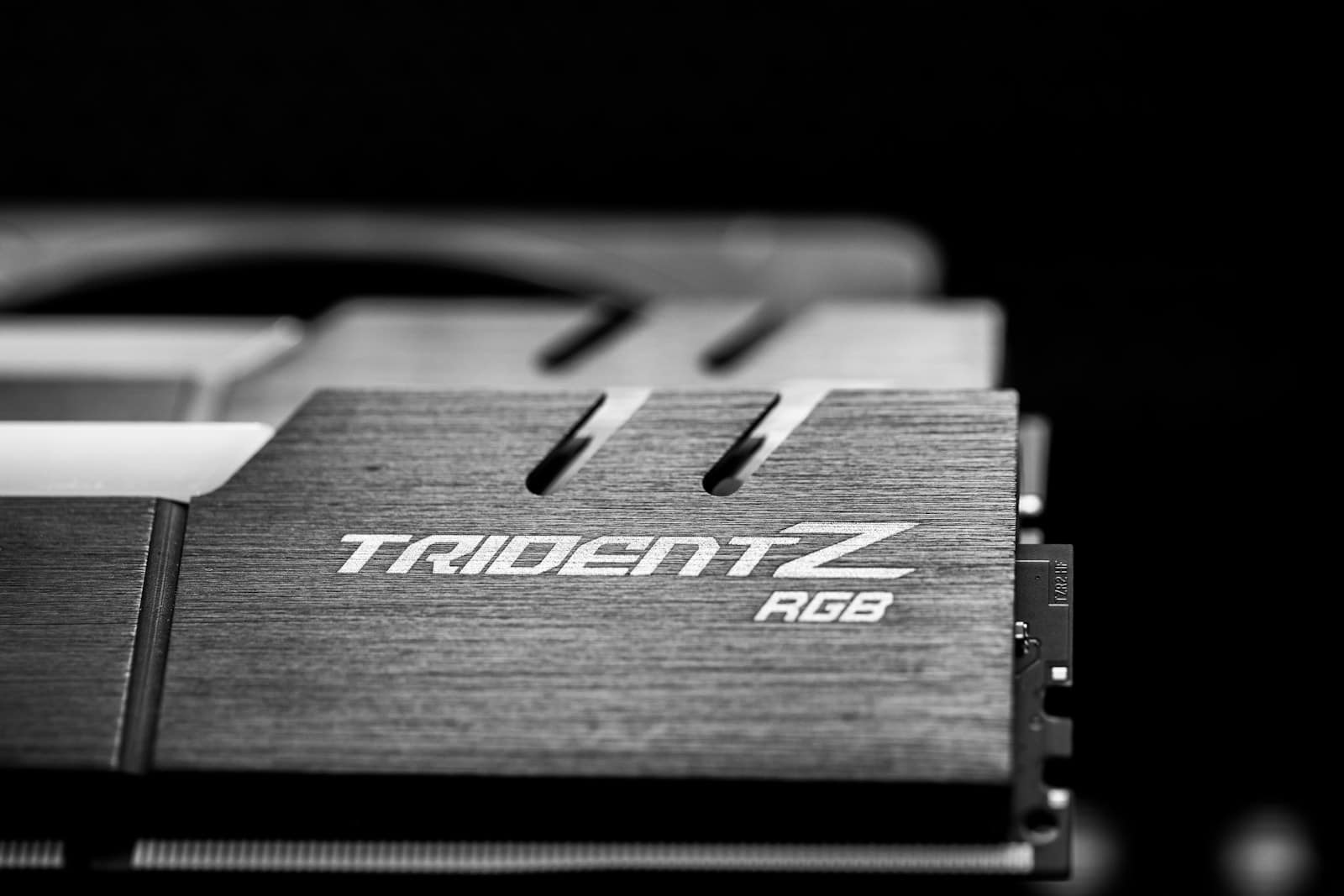Choosing the right computer hardware is important as technology advances. In 2025, there’s a debate between DDR4 and its successor DDR5. While newer generations promise better performance, DDR4 still has its place in the market. The question remains: is it time to switch from DDR4 to DDR5?
DDR5 offers higher speeds and increased bandwidth, but DDR4 still holds its own and is budget-friendly. In this article, we’ll explore the pros and cons of DDR4 and DDR5 to help you decide if it’s time for an upgrade. This article delves into whether choosing DDR4 is a wise decision.
DDR4 vs. DDR5: The Upgrade Dilemma
The Current Landscape
As of late 2024, DDR4 RAM remains a viable option for many PC builders. Its price-to-performance ratio is attractive, and it’s readily available. However, DDR5 is gaining traction, boasting higher speeds and bandwidth.
Performance Differences
While DDR5 offers superior theoretical performance, the real-world benefits for gaming and everyday tasks are often marginal. In some specific scenarios, DDR5 might provide a noticeable edge, but for most users, DDR4’s performance is sufficient.
Price and Availability
DDR4 enjoys a significant price advantage over DDR5. This makes it a compelling choice for budget-conscious builders. DDR5 prices are expected to decrease, but it will likely remain the more expensive option for the foreseeable future.
Future-proofing
DDR5 is undeniably the future of RAM technology. If you’re building a PC that you intend to keep for several years, investing in DDR5 might be wise. However, if you plan to upgrade your system more frequently, DDR4 could still serve you well in the short term.
Compatibility
It’s crucial to ensure compatibility between your motherboard and RAM type. Most modern motherboards support either DDR4 or DDR5, but not both. Double-check your motherboard’s specifications before purchasing RAM.
Use Case Considerations
| Use Case | DDR4 | DDR5 |
|---|---|---|
| Gaming | Adequate for most games | Potential for slightly higher frame rates in some titles |
| Productivity | Sufficient for everyday tasks | May offer minor improvements in demanding workloads |
| Content Creation | Suitable for casual content creators | Could benefit professional creators working with large files |
| Budget Builds | Excellent value | Less cost-effective |
| Future-proofing | Limited lifespan | Better long-term investment |
So, Is It Time to Upgrade?
The decision to upgrade to DDR5 depends on your individual needs and priorities. If you’re on a tight budget or primarily use your PC for casual gaming and productivity tasks, DDR4 remains a solid option. However, if you’re a performance enthusiast, content creator, or plan to keep your PC for the long haul, DDR5 might be the better choice.
Remember:
- Research your specific motherboard’s compatibility before purchasing RAM.
- Consider your budget and prioritize components that will provide the most significant performance gains for your use case.
- Stay informed about the latest RAM technology developments to make the most informed decision for your needs.
Is DDR4 RAM Still Worth It In 2025
| Factor | Considerations |
|---|---|
| Price | DDR4 prices have been dropping, and will likely continue to fall as DDR5 becomes the dominant standard. This makes DDR4 attractive from a budget perspective. |
| Performance | For most general computing tasks and even most gaming, high-end DDR4 offers sufficient performance. The real-world gains of DDR5 might not be noticeable for many users. |
| Compatibility | If you’re building or upgrading an older system, DDR4 offers wider compatibility with motherboards and CPUs. |
| System Upgrade Plans | If you are planning a significant upgrade to a system that will support DDR5 in the near future (within a year or two), opting for DDR5 now might be a future-proof investment. |
| DDR5 Price Trends | While DDR5 prices are also declining, they remain higher than DDR4. The price gap will likely narrow. |
Bottom Line:
- Budget Builds: DDR4 can be a great option for budget-conscious builds.
- Everyday Use and Most Gaming: DDR4 will likely remain sufficient for average users and most gamers.
- Future-proofing: If you plan to upgrade to a cutting-edge system soon, going with DDR5 now might be worthwhile.
Factors like cost, compatibility, and performance play a significant role in this decision. DDR4, once the pinnacle of RAM technology, now competes with faster and more efficient alternatives. However, its affordability and wide compatibility might still make it a viable option for many users. Let’s dive into the details to help you make an informed choice.
Key Takeaways
- Performance and Speed: DDR5 boasts faster data transfer rates and overall improved performance compared to DDR4, making it suitable for gaming and heavy applications. However, for everyday tasks, DDR4 still performs adequately.
- Cost Efficiency: DDR4 remains a more budget-friendly option, often significantly cheaper than DDR5, especially when factoring in the additional costs of compatible motherboards and processors required for DDR5.
- Compatibility Considerations: While DDR4 has broad compatibility with many current systems, the shift toward DDR5 in newer technologies may challenge DDR4’s compatibility with future hardware upgrades, potentially limiting its longevity.
- Choosing Between DDR4 and DDR5: The decision hinges on prioritizing cost savings and sufficient performance with DDR4, or investing in future-proofing and higher speeds with DDR5. Individual needs and plans for their computer system should guide this choice.
- Future-Proofing: For those seeking to keep their systems up-to-date with the latest technology, DDR5 represents a better investment, offering enhanced performance and efficiency benefits over DDR4.
- Long-Term Planning: Considering the lifecycle of your PC and potential future upgrades is crucial; DDR4 could suffice for users with no immediate plans to upgrade, while DDR5 may be more appropriate for those planning frequent updates or demanding the highest performance levels.
DDR4 vs DDR5 RAM
| Feature | DDR4 | DDR5 |
|---|---|---|
| Base Speed | 2133 MT/s | 4800 MT/s |
| Max Practical Speeds | Up to ~3200 MT/s | Up to ~6400 MT/s (and beyond with further development) |
| Capacity per DIMM | Up to 64GB | Up to 512GB (not all CPUs fully support this yet) |
| Voltage | 1.2V | 1.1V |
| Latency | Typically CAS 14-22 | Typically CAS 30-40+ |
| Price | Generally less expensive | Currently more expensive |
| Compatibility | Wide compatibility with older motherboards and CPUs | Requires newer motherboards and CPUs with DDR5 support |
Key Takeaways:
- Performance: DDR5 offers significantly higher speeds and bandwidth, which can benefit demanding applications like high-end gaming, video editing, and professional workloads.
- Capacity: DDR5 provides a huge potential increase in memory capacity per module, though practical limits depend on CPU support.
- Efficiency: DDR5’s lower voltage improves energy efficiency.
- Latency: DDR5 has higher initial latencies, but the faster speeds can offset this in some scenarios.
- Upgrade Path: If you’re building a new PC or plan a major upgrade soon, DDR5 is the future-proof choice.
Is It Still Worth Going for DDR4?
Deciding on computer components can be tricky, especially when it comes to choosing between DDR4 and newer memory types like DDR5.
Performance Comparison with DDR5
When it comes to speed and overall performance, DDR5 has the upper hand over DDR4. DDR5 offers faster data transfer which means your computer can do tasks quicker. However, the real-world difference might not be huge for average users. Games and some heavy applications do benefit from DDR5, but for day-to-day tasks, DDR4 still holds up well. It’s also worth noting that the performance boost with DDR5 might not justify its higher price for everyone.
Cost Considerations
One of DDR4’s biggest advantages is its cost. DDR4 is typically cheaper than DDR5, making it a more budget-friendly option. The price difference can be significant, especially for those building or upgrading a PC on a tight budget. When looking at the cost, it’s vital to consider not just the price of the RAM itself but also the compatible motherboard and processor, which for DDR5, can add to the overall expense.
Compatibility Issues with Future Systems
Considering the future of your computer is important. DDR4 has been around for a while, meaning it has broad compatibility with many motherboards and processors. However, as technology progresses, newer systems are leaning towards DDR5. This shift could make DDR4 less compatible with future hardware upgrades. If you plan to keep your PC without major changes for several years, DDR4 could work. But if you aim to keep up with the latest tech, DDR5 might be a better investment.
Deciding between DDR4 and DDR5 depends on what you prioritize: cost savings and sufficient performance with DDR4 or future-proofing and faster speeds with DDR5. Each option has its pros and cons, making the choice unique to each user’s needs and plans for their computer system.
DDR4 vs DDR5 – Which One Should You Choose?
Choosing the right type of RAM for your computer can feel like solving a puzzle. With technology moving fast, it’s tricky to decide. Let’s break down DDR4 and DDR5 to help you choose what’s best for your needs.
Benefits of Upgrading to DDR5
Upgrading to DDR5 gives your computer a speed boost. DDR5 is faster than DDR4. This means programs and games can run more smoothly. DDR5 also handles more data at once. It’s like having a bigger, faster highway for your computer’s information to travel on. If you love gaming or use heavy software, this is a big plus.
DDR5 also uses power more efficiently. It does more work but doesn’t increase your electric bill much. This can be great for both the planet and your wallet over time.
Factors to Consider Before Choosing DDR4
Choosing DDR4 might still make sense for some. Here are reasons why:
- Cost: DDR4 is usually cheaper. If you’re on a tight budget, saving money on RAM can help you spend more on other parts of your computer, like a better graphics card.
- Compatibility: Not all motherboards work with DDR5. If you’re not planning to upgrade your motherboard or buy a new PC, sticking with DDR4 might be your only option.
It’s important to think about how long you plan to keep your PC. If you’re the type to upgrade often, investing in DDR5 might make sense. But if you plan to stick with your current setup for many years, DDR4 could be enough for now. By the time you’re ready to upgrade, even newer types of RAM might be on the market.
When deciding between DDR4 and DDR5, consider your current and future needs. Think about what you use your computer for and how much you’re willing to spend. Both options have their pros and cons. The right choice depends on what’s most important to you.
Conclusion
Choosing between DDR4 and DDR5 boils down to understanding one’s personal or organizational needs alongside budget constraints. While DDR5’s advancements in speed and efficiency are undeniable, DDR4 still holds value for those not ready to upgrade their entire system or who are looking to save money without significantly compromising performance. It’s essential to weigh the pros and cons of each option carefully. Ultimately, the right choice will align with one’s specific requirements, whether it’s pushing the envelope with the latest technology or making the most of existing hardware for a little while longer.
Frequently Asked Questions
Is DDR4 getting cheaper?
Yes, DDR4 is predicted to become cheaper throughout the year due to an oversupply, with expected price drops between 3% and 8%. DDR5 prices are also falling but at a slower rate of 0% to 5% due to it being newer technology.
Should I buy DDR5 or wait?
If budget allows, investing in DDR5 RAM can be beneficial for new hardware generations. However, it’s important to consider any additional factors such as system compatibility and current market trends before making a decision.
Is 3200MHz RAM good in 2025?
Yes, 3200MHz RAM remains a solid choice in 2024. It is above Intel’s DDR4 memory requirements for both old and new CPUs (12th and 13th gen), providing good performance especially with its lower CAS latency of 16.
Do you need DDR5 in 2025?
For playing the latest AAA games, DDR5 is recommended due to its superior performance. The cost of DDR5 is becoming more affordable, and games are increasingly optimized for this newer memory type, making it a good time to upgrade.
Is there a noticeable difference between DDR4 and DDR5?
Yes, DDR5 provides significant improvements over DDR4, including higher data transfer rates, increased bandwidth, and better power efficiency. These enhancements can greatly benefit high-performance systems, particularly for gaming and content creation.





